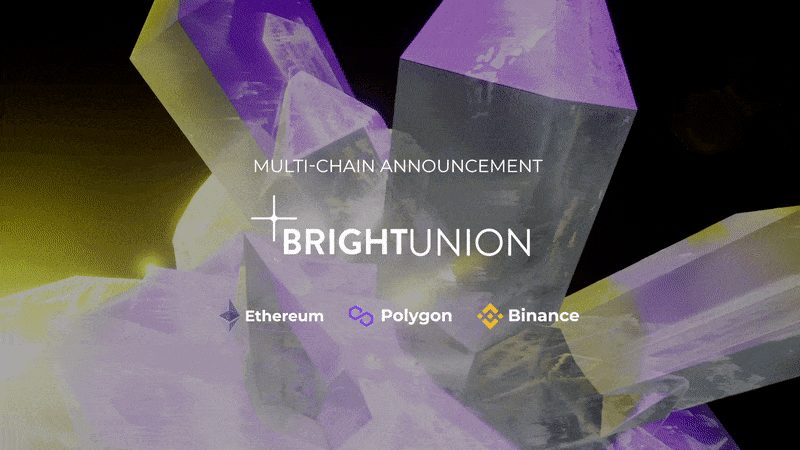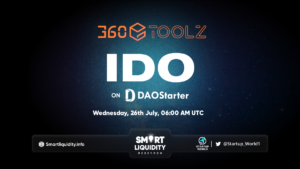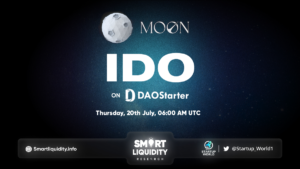Bright Union Onboards Multi-Chain Coverage


Stepping up the game, Bright Union is delighted to expand by providing multi-chain coverage options to increasingly satisfy the needs of its users. After all, their role as a DeFi coverage aggregator is making risk management easily accessible and user-friendly for everyone. If you’re one of the crypto whales, you might not be as concerned about excessive fees. But what about the small fish? When covering smaller amounts, lower fees become increasingly important.
Multi-chain compatibility improves user control by allowing them the power to choose those most suited to their needs. By advising users on the best coverage options for their digital assets, they consider chains that offer the lowest gas prices and transaction fees for every user. Bright Union’s efforts of moving towards multi-chain networks will improve accessibility and broaden the market for DeFi insurance.
Bright Union Multi-chain compatibility enables users to transact on Polygon/BSC, making coverage more accessible, by reducing gas fees with 90%.
They can see an interesting dynamic happening, a continuous flow of users looking for the blockchain with the best properties. As well as a wealth of emerging projects with distinct properties and solutions designed to mitigate Ethereum downsides. While these blockchain competitors are fighting for users with promising rewards and unprecedented speed, scalability, and security, the rapid motion of TVL between blockchains is resemblant of changing tides.
Good Ol’ Ethereum
The influx of projects and dapps flooding Ethereum has led to it becoming the most used blockchain protocol in 2021. However, the increasing number of projects reliant on Ethereum’s protocol has sent gas prices for transactions through the roof. All blockchain network operations are attached to these gas fees due to the required processing power.
The Ethereum network can be likened to a large ship, reliable and safe but expensive and impractical for many. Planned to transition to proof-of-stake swiftly, the Ethereum network has yet to achieve its goal. This is leading many dapps and users to look closely at other blockchain avenues promising reduced gas prices.
The Breakers of Chains
In addition to Ethereum’s soaring gas prices, demand influx has also compromised the network’s operation speed. Dapp developers and users are left wondering if there is a way to capitalize on the established security of the Ethereum ecosystem while streamlining operations and keeping costs at bay.
The first decentralized coverage protocols were built on Ethereum. However, coverage projects/platforms are now looking to expand beyond Ethereum to accommodate all DeFi users.
While numerous blockchains labeled as Ethereum killers are emerging, let’s discuss the competitive advantage of two blockchain systems that have stepped into the spotlight, Polygon Network & Binance Smart Chain (BSC).
Leaving the advantages of other so-called Ethereum killers aside, let’s look at how the chains, as mentioned above, are starting to expand the world of DeFi coverage options.
Polygon Network
Polygon technology scaling solutions combine effective Ethereum network elements and other known blockchains into an established and secure multi-chain system. By focusing on mitigating user pain points, the Polygon network leverages scalability and improved user experience. All while still being supported by the Ethereum ecosystem, without the excessive gas costs. The polygon network distinguishes itself by boasting quick transaction times and low gas fees along with a strong developer community.
The protocol has recently attracted a multitude of blockchain users and developers alike, enabling the network to support more daily transactions than Ethereum.

Binance Smart Chain
Binance Smart Chain (BSC) joined the market to compete against smart contract giant Ethereum, enabling the system development of dapps. Since its launch in 2020, we’ve seen apps and users jump ship to BSC to avoid the high gas prices and decrease transaction transfer time, albeit unfavorably centralized and thus risky. It’s interesting to note that in contrast to the Ethereum blockchain, as BSC users increase, the transaction fees reduce. As a fast yet unsafe blockchain network, BSC performance is favorable for adoption as a short-term solution.
Bright Union Moves Towards Multi-chain
InsurAce, one of Bright Union’s partners, is the first to offer multi-chain DeFi coverage options and risk protection for various blockchains. In addition to Ethereum, it also provides coverage for Binance Smart Chain and Polygon. Users can now cover their crypto with the added advantage of drastically reduced gas fees. Purchase hot polygon covers like Anchor, protecting you against smart contract vulnerability with coverage flexibility and annual premiums as low as 2.5%.


To show you what multi-chain coverage entails, they’ll give a practical example below. As mentioned before, the importance of transaction fees diminishes as the size of the investment increases.
Imagine you want to cover your capital, let’s say $20k. A cover would generally cost you about 2.5% per year, which makes $500. However, a computing power-intensive coverage contract on Ethereum could easily damage you with $150. This transaction cost significantly affects your coverage cost here, increasing the cost of coverage by a hefty 30%.
Now, buying the cover through Polygon would allow you to purchase your small cap cover for a couple of cents. This is where the availability of multi-chain coverage solutions is pivotal for widespread adoption.
Another partner of Bright Union, Bridge Mutual, is making strides towards multi-chain coverage options for Defi users. Bridge Mutual’s upcoming versions will utilize Polygon and Binance Smart Chain networks to strengthen its performance and expand the value proposition.
Going forward, they expect more risk protocols to become compatible with multi-chain networks enabling DeFi users to buy multi-chain covers, including BSC and Polygon. Polygon Technology supports their vision of making risk markets work and provides a developmental grant to expand their growth further. They are thrilled about venturing into the Polygon ecosystem and look forward to their collaborative future ahead. Together with their partners, they continue to accelerate DeFi coverage adoption by focusing on the user and making safe navigation affordable.
About Bright Union
Bright Union is the world-leading multi-chain decentralized finance cover marketplace. Their mission is to safeguard your digital assets from the dark forces in crypto (hacks, smart contract failures, and rug pulls) by empowering the crypto community to cover one another in a decentralized and permissionless manner.
Buying DeFi covers has never been this straightforward. Bright Union provides the most comprehensive range of crypto insurance on the market at competitive prices. Furthermore, Bright Union will soon release its unique suite of cutting-edge risk solutions, providing investors with outstanding investment and coverage opportunities. Be bright and take advantage of DeFi’s exponential growth.
📰 INFO
https://brightunion.medium.com/bright-union-embraces-multi-chain-coverage-84d137b326cb




